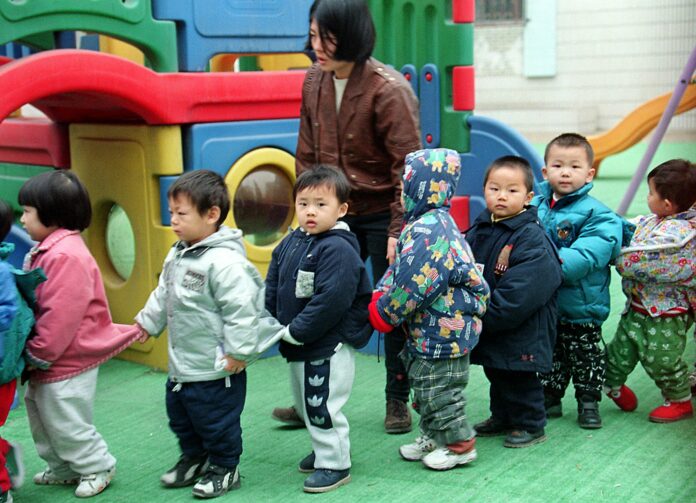As China’s birth rate continues to drop, the country’s early childhood education sector is feeling the pinch.
Kindergartens are being hit particularly hard, with some 20,000 shuttering over the two years alone.
China’s population continued its downward slide last year after dipping in 2022 for the first time since the Great Famine of the early 1960s.
Meanwhile, the birth rate has fallen seventh straight year, while the proportion of seniors is projected to more than double by mid-century.
This demographic shift poses a challenge to economic growth and a strain on public resources, prompting some Chinese economists to call for sweeping measures to incentivize child-rearing.
At the end of 2021, there were 294,800 kindergartens nationwide, according to the country’s education ministry. This figure dropped to 289,200 by the close of 2022.
December 2022 to December 2023 saw an even more dramatic more than twofold drop, leaving 274,400 kindergartens still standing, the country’s education ministry reported in a press conference earlier this month.
China’s foreign ministry did not immediately respond to a written request for comment.
More than half of kindergartens in China are privately funded. Only those that adapt will stay afloat in this unforgiving landscape, according to Xiong Bingqi, director of the Chinese think tank 21st Century Education Research Institute.
One way of increasing a school’s staying power is to increase their teacher-student ratio from the 1:15 typical in China to the 1:10 or 1:5 seen in developed countries, the South China Morning Post cited him as saying.
“If we take this opportunity to raise this ratio, which has been too low in many parts of China, many teachers don’t have to lose their jobs and we’ll have a better quality preschool education,” he said.
The number of newborn babies in China nearly halved from 18.8 million in 2016 to 9.5 million last year, the lowest level since 1949, according to official data.
It may be more difficult for China to reverse its downward-trending birth rate and avoid the lasting impact this will have on its prosperity in the coming decades.
Children represent “economic hope for the future”, University of Wisconsin-Madison demographer Fuxian Yi told Newsweek.
“Because all parents want the best for their offspring, children’s consumption naturally supports a massive industrial value chain. Embodying economic hope for the future, children boost consumer confidence as well as many forms of investment,” he added.
Yi said children are positively correlated with household consumption, while the inverse is true of members of the labor force aged 15-64.
Goh Chai Hin/AFP via Getty Images
Uncommon Knowledge
Newsweek is committed to challenging conventional wisdom and finding connections in the search for common ground.
Newsweek is committed to challenging conventional wisdom and finding connections in the search for common ground.


